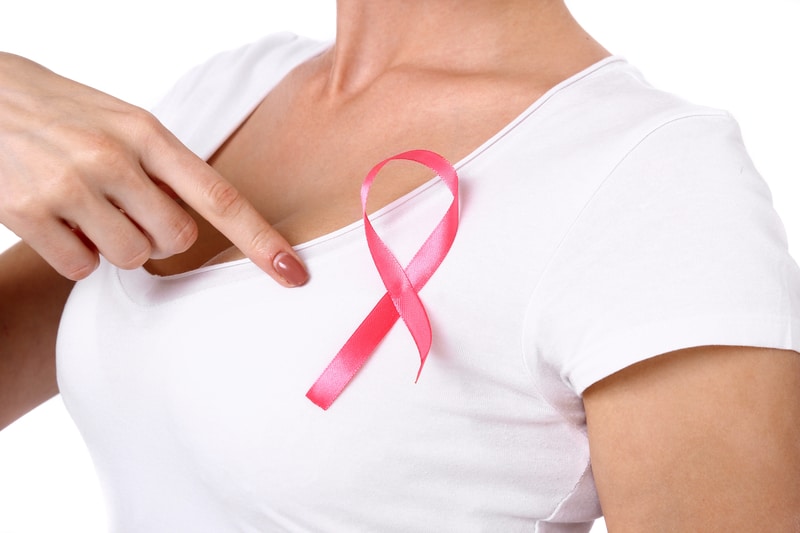Breast cancer is one of the most common cancers impacting women living in the United States. Scheduling a mammogram appointment is one of the best ways to identify the signs of breast cancer. October is breast cancer awareness month, highlighting the importance of mammogram screenings is essential in staying proactive against such deadly cancer. Learning more about this disease is also critical in reducing the risk of breast cancer.
Risk Factors for Breast Cancer
Numerous studies show that the risk of breast cancer is often a combination of different factors. One of the primary factors influencing your risk of breast cancer is being a woman at 50 years old or older. Despite these common risk factors, it’s still possible for people to get breast cancer without including any of these circumstances. Discussing the risk factors for breast cancer with your doctor is vital in helping you to find ways to reduce your breast cancer risk.
Here are a few more risk factors to keep in mind for breast cancer:
Genetic Mutations
Genetic mutations can increase the risk of breast cancer. This is especially true for mutations involving BRCA1 and BRCA2, as it also increases the risk of ovarian cancer.
Reproductive History
Reproductive history also makes an impact on the risk of breast cancer. For example, early menstrual periods before the age of 12 or starting menopause after the age of 55 exposes women to hormones even longer, which raises the risk of breast cancer.
Personal History of Breast Cancer
Women that have already had breast cancer are more likely to experience it a second time. Non-cancerous breast diseases can also raise the risk of getting breast cancer, as it’s important to get regularly scheduled mammograms.
Dense Breasts
Dense breasts have more connective tissue than fatty tissue, making it more challenging to identify tumors by using a mammogram. These challenges make it harder to locate these breast cancer symptoms.
Family History of Breast Cancer
A woman has a higher breast cancer risk if she has a close family member with breast or ovarian cancer. A first-degree male relative that has breast cancer also increases the risk of a woman having breast cancer.
Radiation Therapy
Radiation therapy is used to treat a variety of diseases. However, women that had radiation therapy to the chest before reaching the age of 30 have a higher risk of getting breast cancer as they get older.
Women Who Took Diethylstilbestrol (DES)
The drug diethylstilbestrol (DES) was given to pregnant women throughout the United States to prevent miscarriage between 1940 through 1971. However, DES increases the risk of breast cancer, and it also impacts the women whose mothers took this drug to prevent miscarriages.
What Are the Symptoms of Breast Cancer?
The signs of breast cancer can often vary between people. Some people don’t have any breast cancer symptoms at all, while others can have several symptoms. A few common breast cancer symptoms include any change in the shape or size of the breast. Experiencing any pain in the breast or nipple discharge that isn’t milk can also signify breast cancer. You may even notice a new lump in your breast. Reaching out to your doctor as soon as possible is essential if you have any of these signs of breast cancer.
How to Lower Your Risk of Breast Cancer?
You can do a variety of things to lower your risk factors for breast cancer. One key thing to do is maintain a healthy weight by eating a well-balanced diet and getting enough exercise. Avoiding alcohol or limiting the alcohol you drink is another important factor in reducing your risk of breast cancer. It’s also important to reach out to your doctor before taking birth control pills or hormone replacement therapy. If possible, breastfeeding your child can also help reduce the risk of breast cancer.
Facts About Breast Cancer
- Around 255,000 women in the United States are diagnosed with breast cancer each year, and 42,000 women die due to this disease.
- The majority of breast cancers are found in women that are 50 years of age or older, but it can also impact younger women.
- Men can also get breast cancer, but it’s rarer. Around 1 out of 100 breast cancer diagnoses in the US happen to men.
Closing Thoughts
The breast cancer awareness month of October plays a crucial role in educating people about the risks factors for breast cancer. Staying proactive by scheduling mammograms and learning tips on lowering your risk of breast cancer is essential for women of all different ages. Understanding breast cancer symptoms is also key in getting medical attention as soon as possible by reaching out to your doctor if you notice any of these problems.

